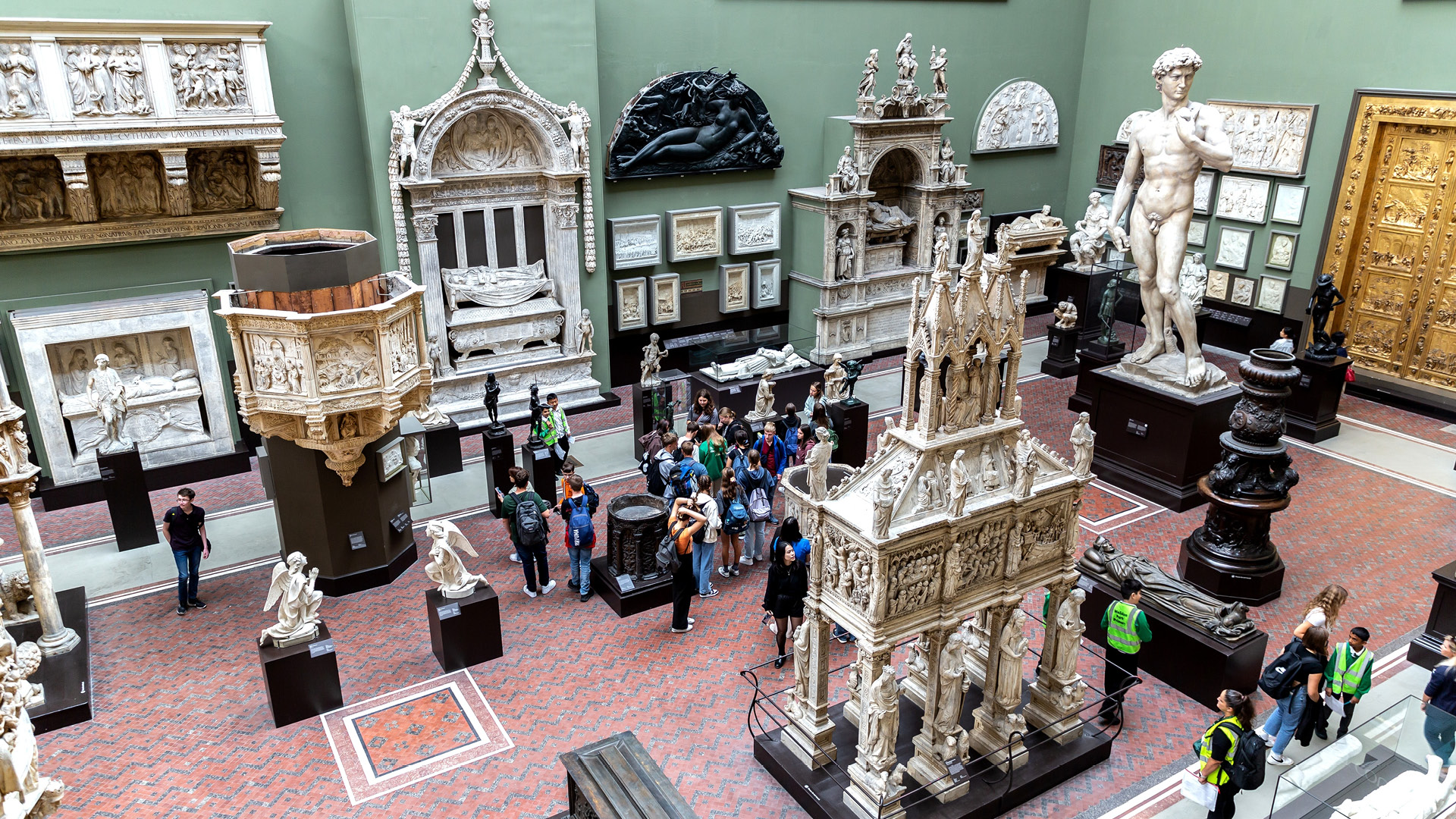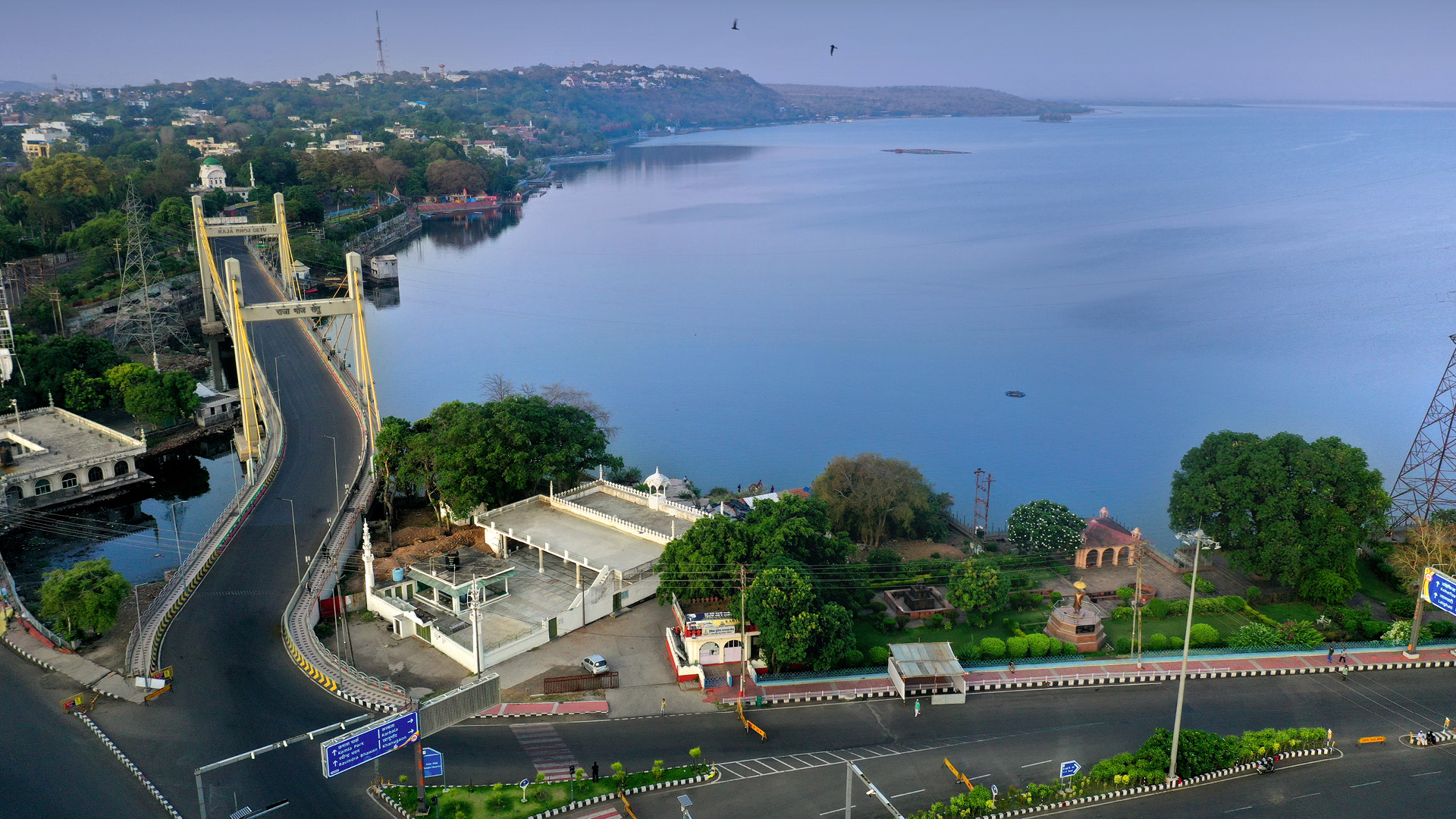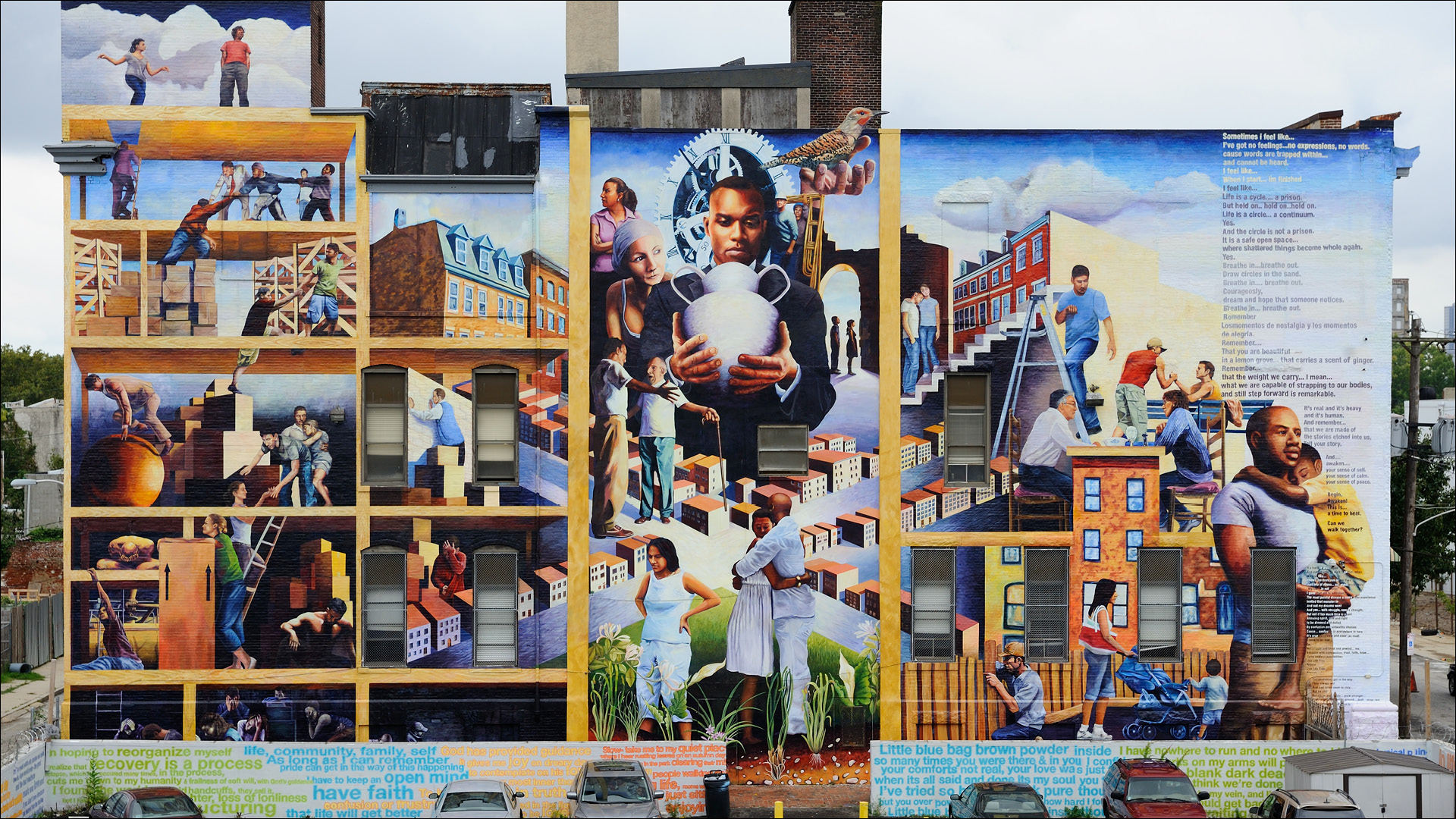Step into a bygone era with a stroll through Fort Kochi’s charming streets, where history meets modernity in captivating cafés, art galleries, and a vibrant cultural ecosystem.
By SNEHA THOMAS
IN PLACE OF GLASS SKYSCRAPERS, old Portuguese buildings stand with enduring grace, having found new life as hotels. Rather than speedboats, unrushed ships float over the waters of the Arabian Sea. And in lieu of electronic billboards, the age-old cries of vendors compete for the attention of passers-by. This and much more filled my vision as I stood amidst the bustling Vasco da Gama Square, watching the iconic silhouette of Chinese fishing nets against the setting sun. And I had to remind myself I’m not part of a sepia-toned photograph. Instead, I’m in Kerala’s ancient port town, Kochi, which the English once called ‘Mini England,’ the Dutch affectionately termed ‘Homely Holland,’ and the Portuguese named ‘Little Lisbon’. And I was set to explore one of its most historic neighbourhoods—the effervescent Fort Kochi.
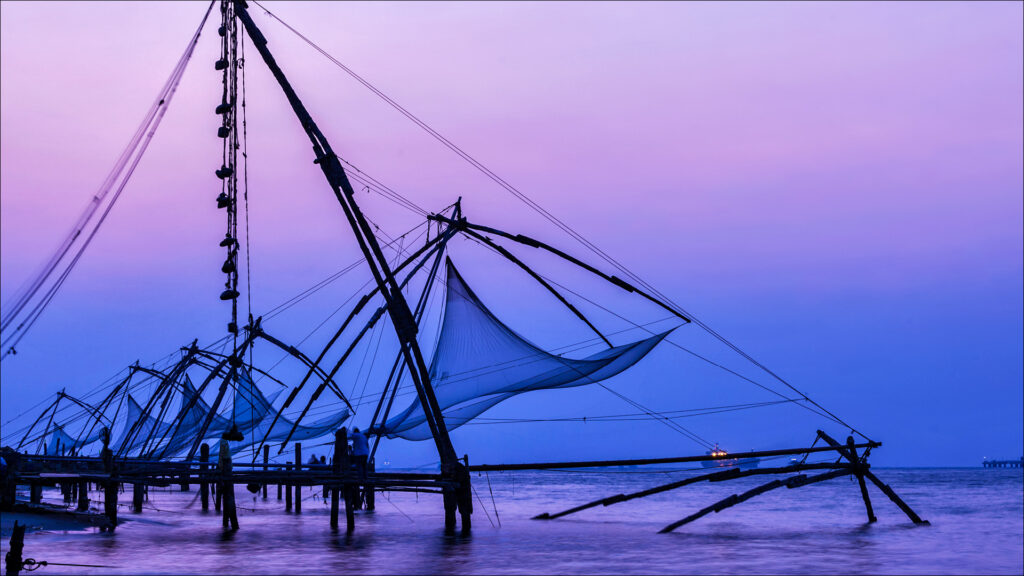
over the waters in Fort Kochi at sunset.
As evening fell, I walked through the streets towards the picturesque Brunton Boatyard hotel, my chosen retreat by the harbour for the next two days. The architecture here—a blend of British, Dutch, and Portuguese influences—bears testament to the many hands that shaped its design. This former Dutch boatyard functions as a boutique heritage property today. And it’s here I enjoyed a good night’s sleep, before heading out on my tour of this inviting destination.
Heaps of History
The birth of this charming port town recalls an unexpected twist of destiny. Once, a short distance to the north lay the port of Muziris, a thriving hub of the spice trade in the 14th century. In 1341 AD, however, a catastrophic flood is believed to have devastated Muziris, leading to the natural emergence of a new harbour 30 kilometres to the south, which is now known as Kochi. Almost overnight, this once obscure town became the epicentre of trade. Soon, the Portuguese arrived. Led by Vasco da Gama, they marked the beginning of the colonial era by building Fort Emmanuel (now Fort Kochi). They were followed by the Dutch, and eventually, the British, all drawn by the irresistible allure of exotic spices and the promise of wealth.
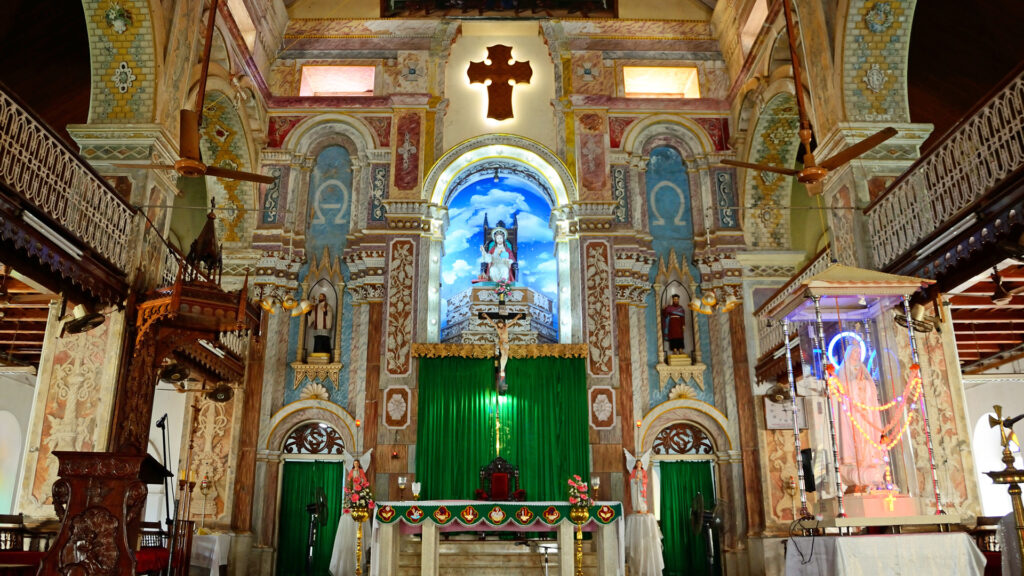
Inspired by the historic richness of my setting, I decided to begin my odyssey at the Santa Cruz Cathedral Basilica, an imposing 16th century church known for its amazing design and art. The interiors here are a sight to behold! Stately columns adorned with vivid Italian frescoes and murals greeted me as I entered. Most notable is the Renaissance craftsmanship of Italian artist Antonio Moscheni. His poignant portrayal of The Last Supper at the altar and depictions of Christ’s crucifixion gracing the ceilings captivated me, with each brushstroke revealing layers of history and artistry. It was a surreal experience as I found myself revelling in the mystical vibe.
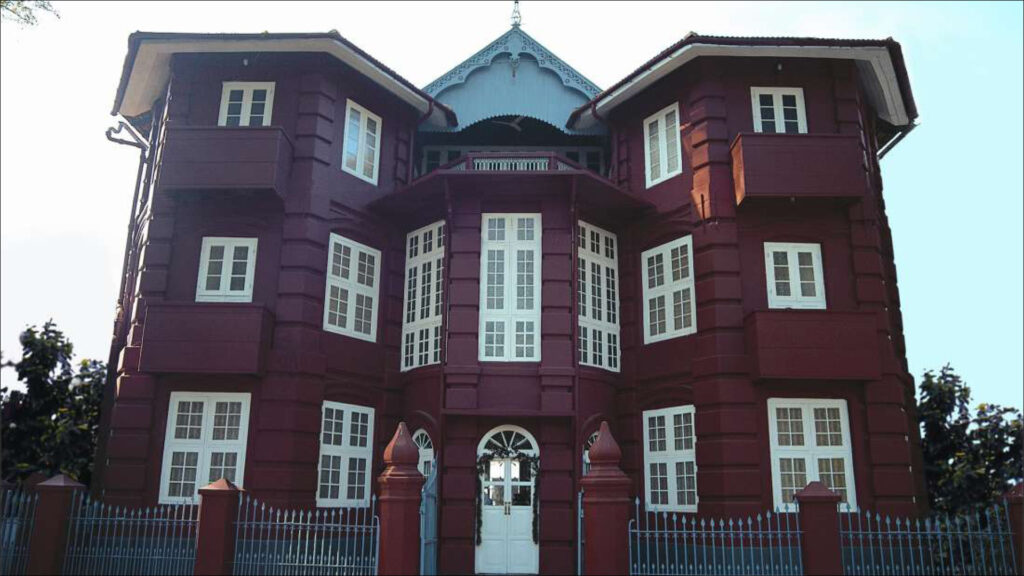
My architectural journey continued at my next stop, two famous colonial structures offering great backdrops for Instagrammable pictures. The first is a building robed in white, its architecture a nod to Dutch influences. The bold, Amatic-styled lettering on its façade reads Old Harbour Hotel—known for being the first hotel in old Cochin (erstwhile Kochi). Adjacent to it, Koder House features a striking contrast of deep-red-bricked exterior and pristine white windows. Initially a Portuguese mansion, this dwelling underwent a changeover at the hands of a Jewish merchant, and now, hosts guests as a boutique hotel. Both properties present wonderful representations of the stylistic diversity found in this coastal town and are a must-see.
Walking ahead, along the tree-lined pathways, I reached the unassuming yet distinguished St Francis Church. Built in 1503 AD, this was the first European sanctuary erected on Indian soil. It was within these historic walls that Vasco da Gama was initially laid to rest, though eventually, his remains were returned to his homeland. And nearby, stands Vasco House, believed to be the house of the man himself. Featuring a robust stone staircase and classic Portuguese windows, today, it welcomes travellers as a homestay.
My heart filled with artistic beauty, it was now time to pay attention to the hunger pangs that were getting stronger with every step! And so, I made my way to David Hall. Standing adjacent to the church, it boasts a 300-year-old Dutch heritage and now serves as both an art gallery and café. The aroma of fresh bread lured me into the Pandhal Café & Deli, an alfresco haven nestled within this centre. Tempted by the many options on offer, I finally selected their wood-fired Roman Pepperoni Pizza. It was a good choice! As I bit into the first slice, the tantalising smokiness of the salami paired with melted cheese transported me to sheer ecstasy. Needless to say, I polished the entire pizza off with immense delight.
Satiated and energised by the meal, I found the will to add one last activity to the day: witnessing the Chinese fishing nets in action at Fort Kochi Beach. It is believed that these nets, with their balletic balance of weights and counterweights, arrived here from the distant shores of China in the 14th century, testifying to the trade ties between the Chinese and Fort Kochi. As I approached, a fisherman with sun-hardened features and a welcoming smile gestured to me to join their time-honoured ritual of drawing the nets. It seems tourists can partake in this ancient practice in exchange for a small tip as long as daylight permits. Excited, I stepped up, completing a team of four. Together, we pulled the nets, but the sea, in its mysterious ways, gave us nothing that evening. For me, the true reward lay in the shared moment and the honour of participating in a cherished tradition!
A Melange of Art and Gastronomy
Having wrapped up my cultural exploration, I decided to explore Fort Kochi’s highly acclaimed culinary scene the next day. Many of the area’s elegant structures, once residences of colonial rulers, have gracefully evolved into charming cafés, art galleries, and hotels. And so, I set out to sample their gastronomic delights with relish.
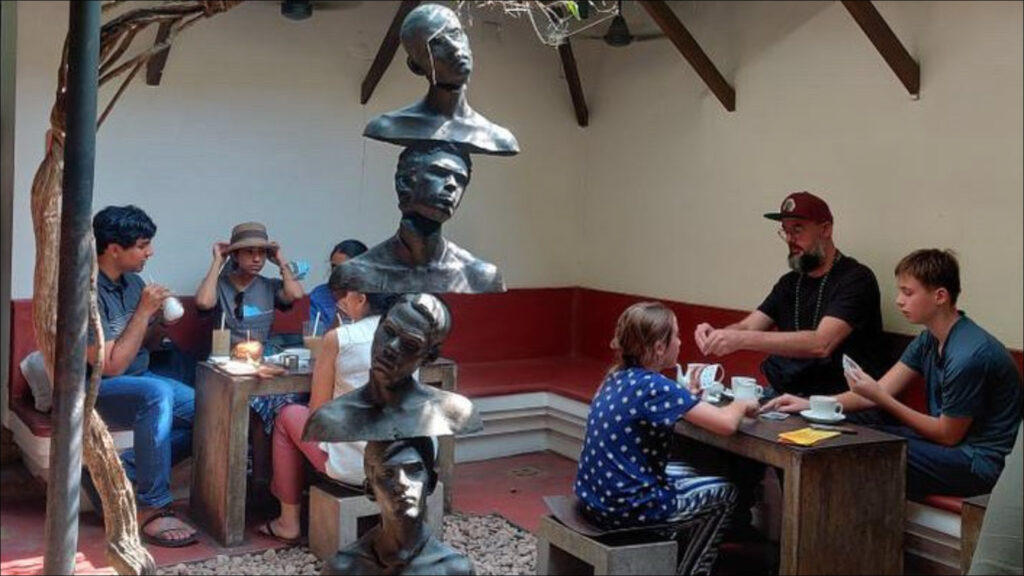
Located on Burgher Street, Kashi Art Café is renowned for its all-day breakfast, and appealed as a befitting start to my day. Upon entering, I felt the warmth of a familiar neighbourhood home, accentuated by vertical gardens and sleek cement benches. I chose a spot in the sunlit courtyard, where the centrepiece is an art installation—a vertical stack of human heads! Mesmerising, to say the least. It was under their watchful eyes that I indulged in the café’s famed chocolate cake, lushly blanketed with a silken chocolate sauce, offering a blissful indulgence that was well worth the calories!
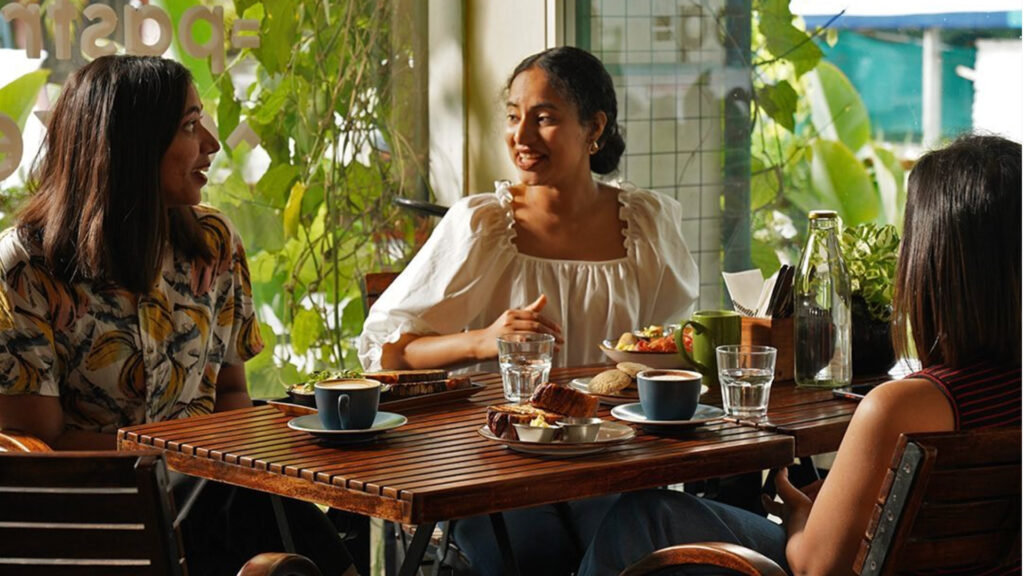
Post that decadent repast, I let myself wander the area aimlessly and soon found myself in the OED Art Gallery. Once a bustling pepper warehouse, it now captures the essence of the esteemed Kochi Biennale. Standing amidst its artistic treasures, I was enraptured by ‘Life, Tribe, and Forest’—an evocative collection of tribal and folk art illustrating the bond between the Gond tribe and nature.
Later, I ambled to the Lila Art Café, another Dutch marvel that’s home to a central courtyard and the Kazhcha art gallery—named after the Malayalam word for ‘sight’. Here, I savoured vattelappam—a rich Sri Lankan treat crafted from caramelised jaggery and luscious
coconut milk, marking a sweet finale to my walking adventures.
A Celebration of Culture
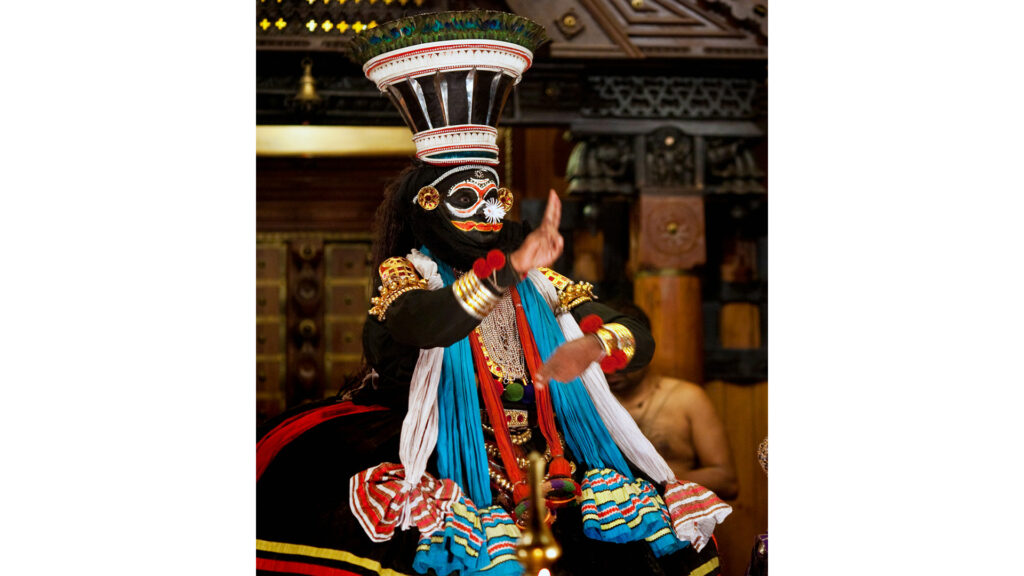
I spent my last evening in Fort Kochi being regaled by a Kathakali performance at the Kerala Kathakali Center. The show opened with a live make-up and artistry demonstration for novices. As the main act unfolded, the expressive faces of the dancers, paired with the invigorating beats of the chenda (two-sided traditional drum) gave the ambience a mystical air. By the time the curtain fell on the show, I felt as if the room—and I within it—had been transported to ancient Kerala, a period that appeared to be worlds apart from the colonial influences of Fort Kochi.
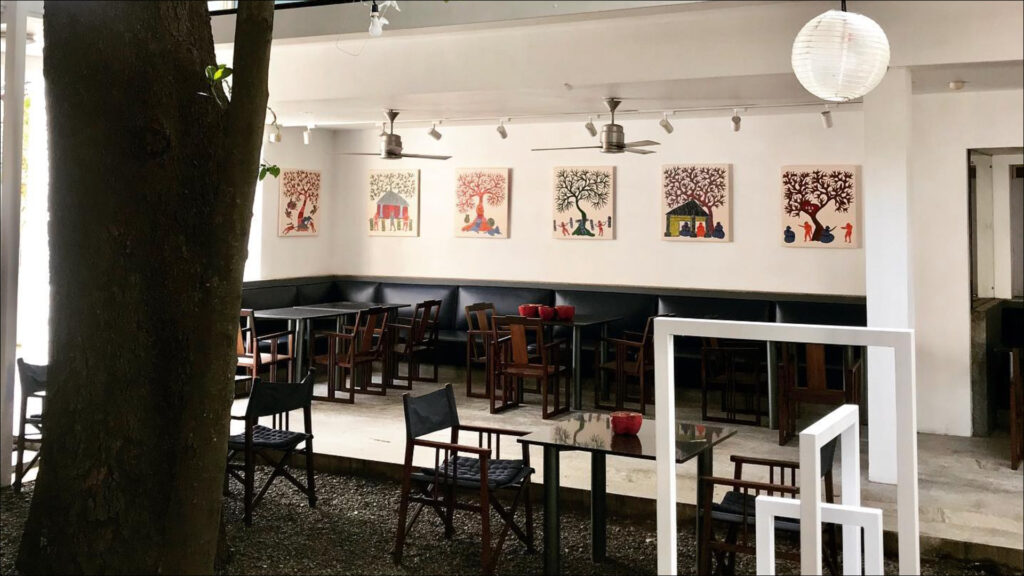
Still spellbound by the performance, I found myself back at the beach, where I opted for a uniquely Fort Kochi dining experience: ‘You Buy, We Cook.’ As the phrase suggests, diners buy the fresh seafood on sale here, which is then cooked by local beachside shack owners. I picked my favourites and handed them over into the creative hands of one such entity, who served me a Kerala meen pollichathu (fish roasted in banana leaf) infused with the region’s celebrated spices. A hyperlocal delight that provided a delicious conclusion to my enriching days in Fort Kochi—a tapestry of art, architecture, cuisine, and history.
Related: 7 Unforgettable Holiday Spots From Around The World for a Love-Fuelled Adventure

